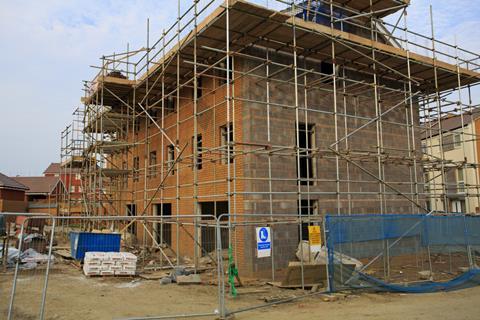Conservative MP says “sclerotic planning laws” should and can be reformed to free up land for development

A new report published by a free-market think tank and by co-written by Conservative MP and arch Eurosceptic Jacob Rees-Mogg has called for sweeping changes to the way the UK plans for and builds homes.
The paper, “Raising the roof: how to tackle the UK’s housing crisis”, published by the Institute for Economic Affairs, presents a programme of far-reaching free-market reforms which Rees-Mogg said would help tackle the UK’s housing crisis – or as the document labels it, “catastrophe”.
Among its recommendations are calls to scrap VAT on refurbishment activity, for green belt land to be selectively re-classified where housing is most needed, for what it calls “tax distortions” – such as stamp duty and capital gains tax – to be revised and reversed, and for permitted development rights for individual streets or villages to be introduced.
It also put forward the idea of a fast-track system for those looking to self-build their own homes.
Rees-Mogg and his co-author, IEA luminary Radomir Tylecote, claim in their report that the UK builds too few homes that are too small, located in the wrong place and “built in a way that is considered undesirable by the majority of British residents”, a situation they say is due to increased state control in the market.
The MP, who chairs the pro-Brexit European Reform Group in Westminster, said: “Once Brexit is delivered, resolving the problems of the UK’s housing market will be the most important political challenge we face. Many young people, already struggling to afford to pay rent in the big cities, can only dream of buying their first home, and those who wish to downsize cannot afford to because of the inherent costs of doing so. It is clear the central planning of housebuilding does not work and something has to change.
“This important report sets out a number of ways in which our sclerotic planning laws can be reformed to free up land for development in the places homes are needed, how tax can be cut and decentralised so as not to clog up or distort the housing market, and how planning powers can be devolved to local authorities to build and beautify our towns and villages.
“We now have the ideas with which we can relieve our housing shortage. All that’s left is the political will to do so.”
Paul Smith, managing director of Strategic Land Group, said the report was right to highlight the constraints within the system which drive up prices, and he warmed to the theme of supporting self-build operators.
But what he called “the misguided belief that more attractive homes would help increase housing supply flows through into the proposed solutions, with an apparent belief that nimbyism will fall away if residents were given more control over development.
“There are, though, some helpful suggestions that actually could help to increase supply, most notably a selective release of green belt land by simply testing it against the current criteria.”
Rees-Mogg’s report’s recommendations include:
- Right to Buy should be transformed to apply to government land
- This will allow people the right to demand the sale of government land that could be used to build more homes
- Government can reverse the compulsory purchase procedures it has used to acquire land, using Disposal Orders for public sector land to create entrepreneurial opportunity: compulsory purchase orders in reverse
- Stamp Duty could be reduced to 2010 levels and then devolved so that local governments have the capacity to reduce it further. This should make it possible for more people to upsize or downsize
- VAT on maintenance and restoration harms supply, and can be abolished
- Areas of green belt that do not support a single one of the five National Planning Policy Framework purposes should be declassified, with a presumed right to development
- Releasing green belt land near transport hubs should be a priority
- Green belt land that is already built on, that has become derelict, and other brownfield areas within the green belt should also be declassified, including Metropolitan green belt land
- Development rights should be granted to individual streets or villages to ‘build and beautify’
- Any residential city street could give itself additional development rights to extend or replace up to a permissible height.











1 Readers' comment